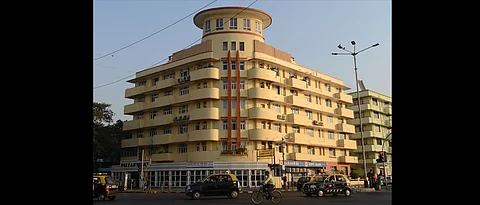

Mumbai: The famed 'art district of south Mumbai' comprising Victorian Gothic and Art Deco Ensembles has been named as the latest entrant to the coveted World Heritage sites list, said an announcement by Unesco on Saturday.
The decision came on Saturday morning at the ongoing 42nd session of Unesco World Heritage Committee, from June 24-July 4, currently underway in Bahrain.
"Just inscribed as @UNESCO #World Heritage Site: Victorian Gothic and Art Deco Ensembles of Mumbai, India. Congratulations," a UNESCO tweet said.
Maharashtra government had first submitted its formal nomination proposal for the UNESCO honour in 2012 for the 'Victorian Gothic and Art Deco Ensemble of Mumbai', but it was edged out by other major Indian landmarks.
It was supported by the Centre, the BrihanMumbai Municipal Corporation, Mumbai Metropolitan Region Development Authority, several NGOs and art bodies, besides the Mumbai Heritage Conservation Committee.
The landmark cricketing ground, Oval Maidan and its neighbourhood are replete with two unique genres of architecture standing cheek-by-jowl, the 19th century Victorian Gothic and 20th century Art Deco style buildings, forming a distinct urban scenario.
Among the Victorian styles are iconic buildings like the Bombay High Court, University of Mumbai, the Maharashtra Police Headquarters building, ranked among the finest in the world.
Most of these buildings in stone were constructed during the late 19th century after demolishing the crumbling walls of the old Bombay Fort, and designed by masters like Sir Gilbert Scott, James Trubshaw and Lt. Col. James Fuller.
The later Art Deco development in the 20th century, comprising over 125 buildings, was planned as per the designs of W. R. Davidge in the 1920s onwards, making it the second largest ensemble of such buildings in the world.
Significantly, it also symbolised the growing affluence and commercial importance of (then) Bombay, which was taking its baby steps to gigantic strides and emerge as the country's financial capital after five decades.
Some of the prominent Art Deco structures that stand majestically include the Regal Cinema, Rajab Mahal, India Assurance Building, New Empire Cinema, Fairlawns building, Eros Cinema, several residential buildings on Marine Drive, and a few even in the northern parts of the island city.
However, no other city in the world has such a large ensemble emblematic of the 19th and 20th century architectural styles, literally facing each other over a small geographical area of urban design.
With the latest addition, Mumbai region now has three World Heritage Sites, including two bang in the city with the other being the Chhatrapati Shivaji Maharaj Terminus, the Central Railway headquarters.
The other is on the outskirts of Mumbai is the picturesque Elephanta Caves in adjoining Raigad district, with beautiful rock cut images of Lord Shiva and a few Buddhist mounds, making it a global tourist attraction.
Dating back to the 5th-7th centuries, the group of caves were carved out in rocky terrain of the green and hilly Gharapuri Island, around 10 km off Mumbai in the Arabian Sea, and declared a World Heritage site in 1987.
